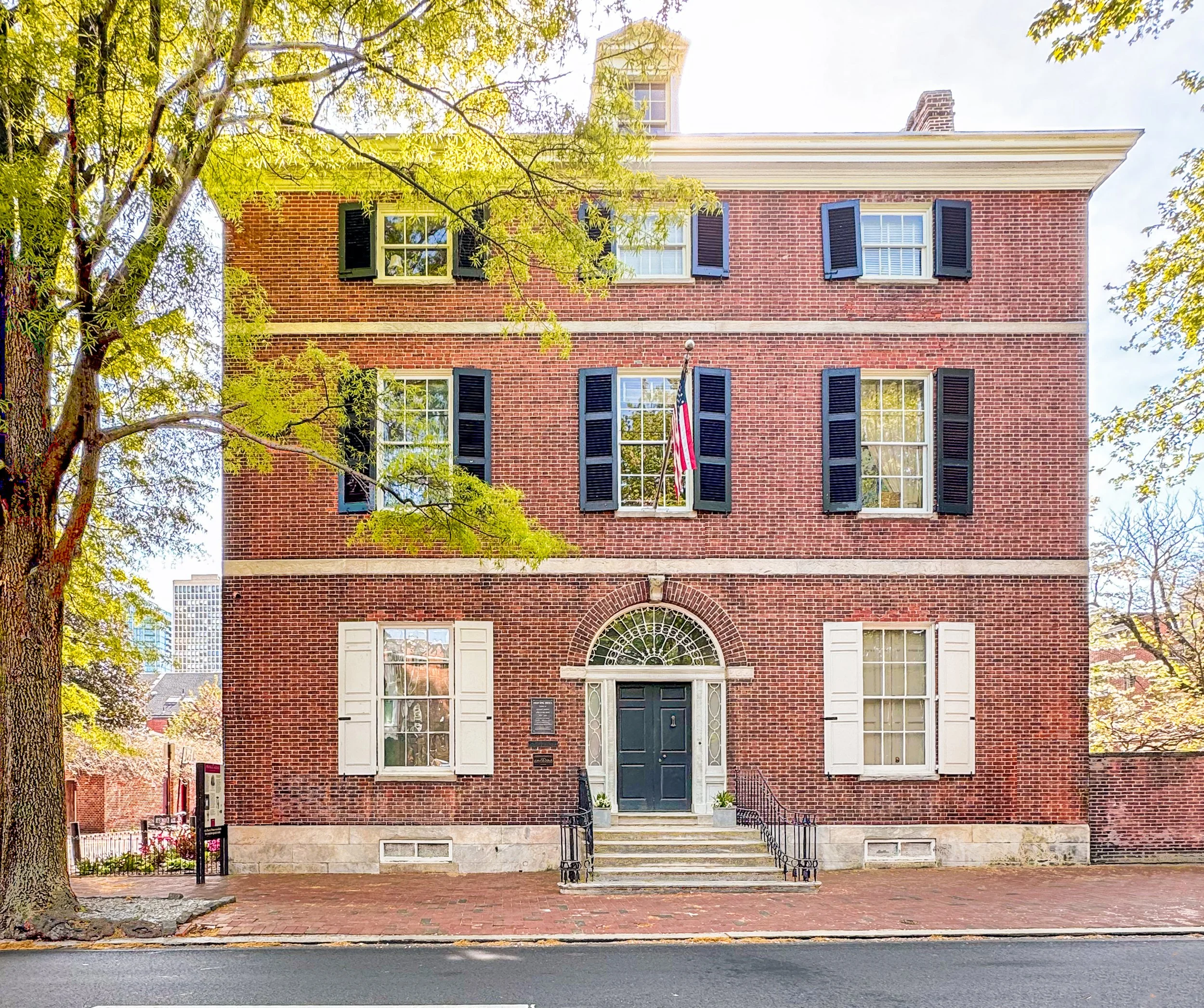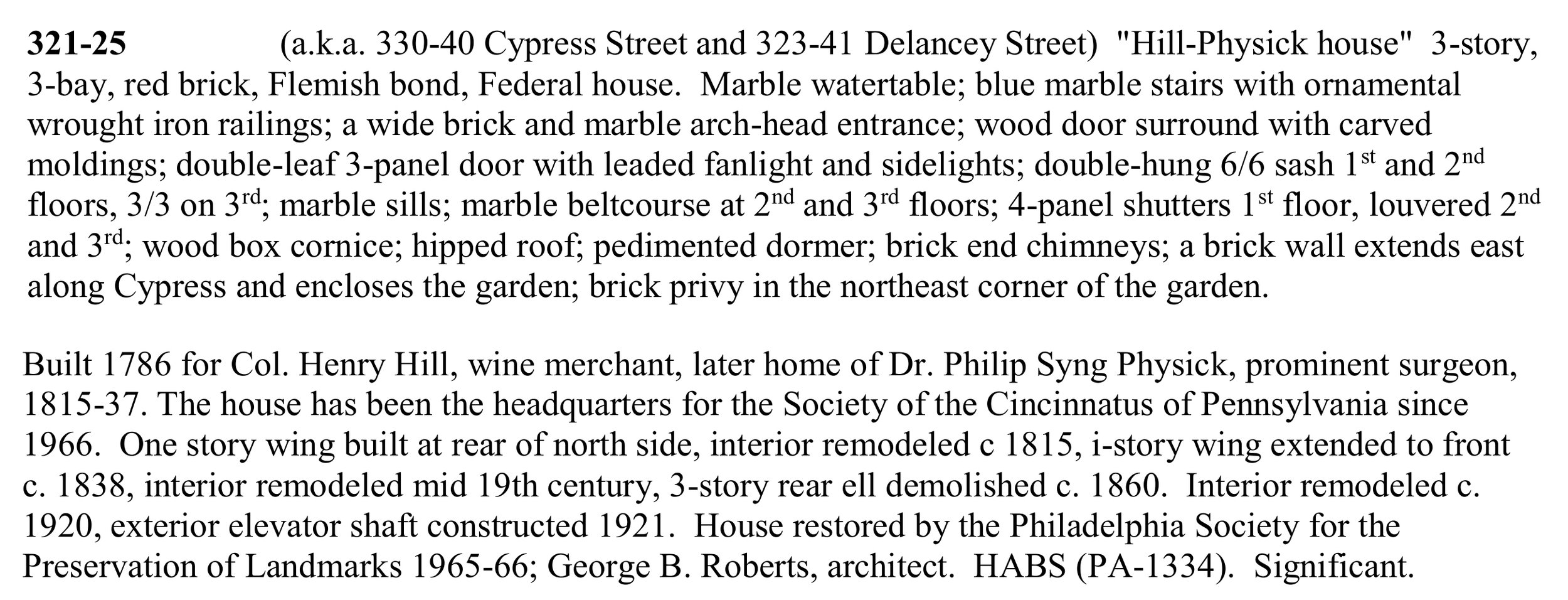Historic Quaker Houses of Philadelphia
Birthright Quakers who became Anglican:
The Hill-Physick House
321 S. Fourth Street
Built in 1786
Above: The Hill-Physick House built by wine merchant Henry Hill in 1786. Image source: Lee J. Stoltzfus
This landmark house is the only free-standing (non-rowhouse) Federal house surviving in Society Hill. It was built in 1786 by wine merchant Henry Hill, who was born into a prominent Quaker family. This house later was home to Dr. Phillip Syng Physick, from 1815 until his death in 1837. Dr. PHysick is known as "the father of American surgery". The house is listed as a National Historic Landmark. It is owned by the Philadelphia Society for the Preservation of Landmarks, and is open to the public as a house museum.
Portrait of Henry Hill
Who Built the Hill-Physick House:
Above: Henry Hill who built the Hill-Physick House. Image source: Samuel Carpenter and His Descendants, General Louis Henry Carpenter, 1912, Internet Archive
Henry Hill
Transitioning from Quaker to Anglican:
Henry Hill was born into a Maryland family that had an impressive Quaker history. He was raised in the Society of Friends, but he began to distance himself from Quaker traditons as a young man.
In 1773 Henry Hill married Ann Meredith, a birthright Quaker. Her father was the wealthy merchant Reese Meredith. Henry and Ann Hill chose to be married in an Anglican church, rather than a Quaker meeting. Their 1773 wedding at Christ Church resulted in the couple being disowned by the Quakers.
Henry Hill supported the revolutionary war. In 1774 he and his new wife entertained George Washington and John Adams in the Hills’ Roxborough country house while the Continental Congress was in Philadelphia.
In 1774 Henry Hill helped form the First City Troop militia. Two years later he was named a colonel in the Fourth Pennsylvania Regiment. Colonel Hill’s shift in religious identity mirrored the conflicts faced by many Quakers. Some Friends remained pacifists, while others turned their backs on the Quaker testimony of nonviolence.
Above: View of the Hill-Physick House in a scrapbook compiled by Samuel Castner, Jr., 1843-1929. During this time Delancey Street was named Union Street. Image source: Free Library of Philadelphia
The House Description in
Philadelphia Register of Historic Places:
Image source: Philadelphia Register of Historic Places
A ca. 1865 Photograph of the Hill-Physick House:
Above: Trolley tracks cut through the cobblestone street in front of the Hill-Physick house in this ca. 1865 photograph. Image source: Free Library of Philadelphia.
Links:





